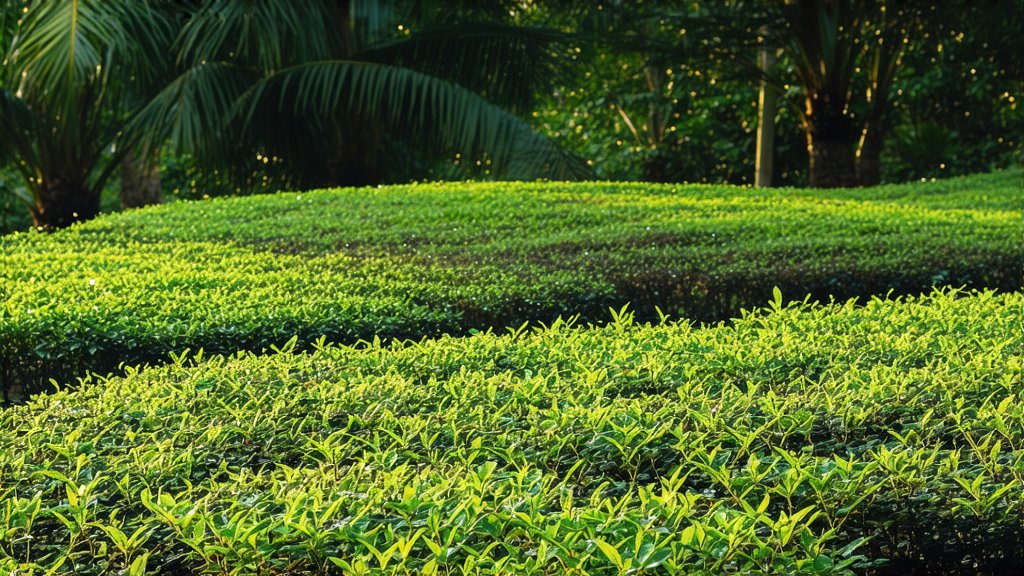
In the vast and diverse landscape of Chinese tea culture, Bai Mudan (White Peony) stands as a testament to nature's purity and simplicity, embodying the essence of minimalism in both its production and flavor profile. This variety of white tea, originating from the mountainous regions of Fujian Province, has captivated tea enthusiasts worldwide for centuries with its delicate aroma, subtle sweetness, and unparalleled health benefits.
A Glimpse into History
The history of Bai Mudan dates back to the early Qing Dynasty, around the year 1796, making it one of the oldest tea varieties still produced today. Its name, which translates to "White Peony," reflects not only the color of the tea but also its association with elegance and refinement in Chinese culture. Legend has it that Bai Mudan was discovered accidentally when a tea farmer named Wang Xinren noticed sprouts on his old Bai Hao Yinzhen (White Downy Tips) tea bushes after they had been covered by bamboo leaves to protect them from frost. These new shoots were harvested and processed separately, resulting in a unique tea that quickly gained popularity for its exceptional quality.
Varieties and Grading
Bai Mudan falls under the broader category of white teas, which are characterized by their minimal processing, allowing the natural flavors and properties of the tea leaves to shine through. Unlike other types of tea where rolling and fermentation play crucial roles, white tea undergoes only two primary stages: withering and drying. Bai Mudan, in particular, is prized for its balanced combination of downy buds (also known as "silver needles") and young leaves, giving it a distinctive appearance resembling a peony flower in bloom—hence the name.
There are generally two grades of Bai Mudan: Superior and First Grade. Superior Bai Mudan consists solely of the plumpest buds and youngest leaves, offering a more refined taste and higher concentration of nutrients. First Grade Bai Mudan includes slightly more mature leaves along with buds, providing a robust yet still delicate flavor profile.
Crafting Bai Mudan: An Art of Simplicity
The journey from leaf to cup for Bai Mudan is a testament to the artistry involved in traditional tea making. The process begins with selective handpicking during early spring when the first flush of buds appears. Only the freshest and most tender parts of the plant are chosen, ensuring optimal flavor and aroma.
Once harvested, the leaves undergo a natural withering process, either spread out under the sun or left indoors to dry gently. This step allows enzymes within the leaves to break down complex compounds, reducing bitterness and enhancing sweetness. Following this, the leaves are lightly baked or air-dried to remove any remaining moisture, preserving their delicate character without applying heat that could alter their inherent qualities.
Savoring Bai Mudan: A Sensory Experience
To truly appreciate Bai Mudan, one must engage all senses in the tasting ritual. Begin by observing the dry leaves, noting their silvery hue interspersed with hints of green. As you brew them in hot water (approximately 80°C or 175°F), watch as they slowly unfurl, releasing a fragrant steam that fills the air with notes of honey, melon, and a whisper of floral undertones.
Tasting Bai Mudan reveals a symphony of flavors: a gentle sweetness reminiscent of ripe fruit, a subtle vegetal note, and a lingering finish that leaves the palate refreshed and craving another sip. The tea's light body makes it an ideal companion for moments of contemplation or casual conversation, inviting drinkers to slow down and savor each moment.
For those new to Bai Mudan or seeking to deepen their understanding, here are some tips for optimal enjoyment:
- Use Water Wisely: Always use freshly drawn water and avoid boiling it; let it cool slightly before pouring over the tea leaves to prevent scalding.
- Measure Carefully: A ratio of approximately 3 grams of tea per 150ml of water is recommended for a balanced infusion.
- Time It Right: Steep for about 3-5 minutes for the initial brew, adjusting subsequent steeps based on personal preference. Bai Mudan can typically be resteeped multiple times, each brew revealing different facets of its character.
- Embrace the Temperature: While Bai Mudan can handle slightly cooler temperatures than other teas, starting with warmer water helps extract more flavors initially.
- Appreciate the Evolution: Pay attention to how the tea evolves with each steep—the flavor profile will shift subtly, offering a dynamic experience throughout the session.
Conclusion
Bai Mudan is more than just a beverage; it embodies a philosophy of harmony between man and nature, where simplicity reigns supreme. Its creation is a dance of tradition and terroir, each sip a connection to centuries-old practices and the pristine environment of Fujian Province. As we continue to explore the depths of this remarkable tea, may we find inspiration in its purity and tranquility, reminding us of the beauty that lies in embracing life's simple pleasures.